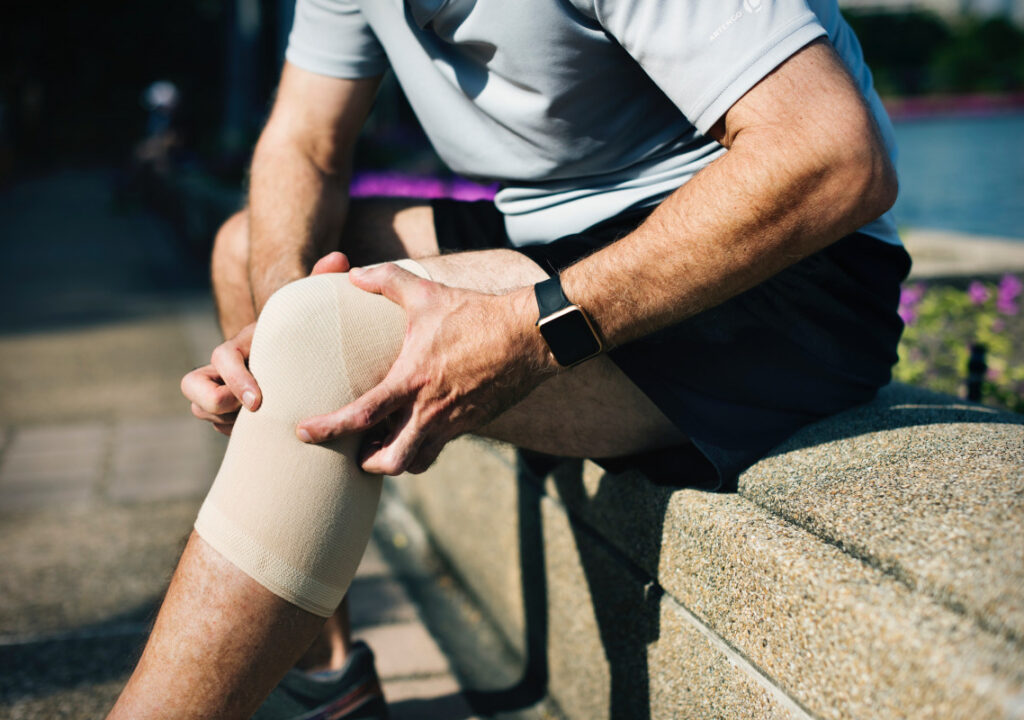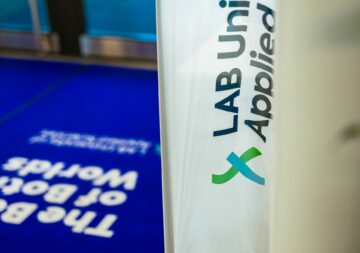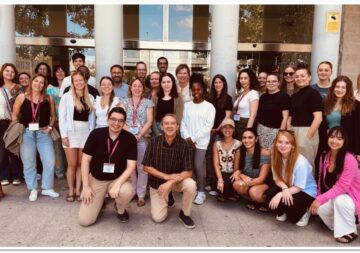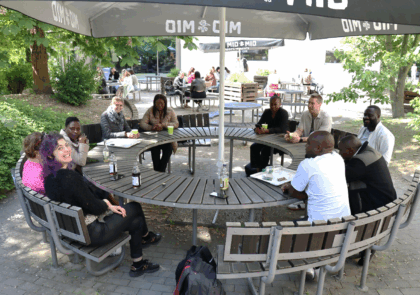
Among other sports injuries, anterior cruciate ligament (ACL) injuries are a widespread issue in the world of sports. Many athletes who sustain an ACL tear go on to experience long-term complications like recurrent injuries or deteriorating lesions of the nearby region of the knee. Recent research suggests incorporating core endurance training as a specific training has certain benefits to decreasing recurrent ACL injuries. This article gives a summary of the benefits of using core endurance training to aid athletes recovering from ACL injuries.
Authors: Sara Dulle & Aki Rintala
ACL injuries
ACL is an important ligament that links the femur to the tibia and is primarily responsible for stabilizing the knee in connection with the posterior cruciate ligament and other ligaments surrounding and supporting the knee joint and its function. ACL injury occurs when there is extensive external stress impacted on the ligament, most often occurring in a non-contact moment for example in movements of cutting or landing after a jump, certain knee movements directions such as rotation, or change of direction in fast movements. (Renstrom et al. 2008.)
Most often ACL injuries are occurring in sports with fast direction changes like female football, handball, and American football (Gans et al. 2018 & Dos’Santos et al. 2019). One issue that frequently arises following knee rehabilitation is the continued instability of the components that are linked to long-term degenerative lesions or recurrent ACL injuries (Domnick et al. 2016). The athlete’s career can be significantly impacted by the long-term effects of the injury, as they may continue to have challenges in the injury area later on. This is why increased evidence-based training is required.
What is core endurance training?
Core endurance training focuses on the ability to maintain the contraction for a longer time of the muscles which stabilizes the core and spine. By stabilizing the spine during the activity, the load on the joints of the lower body can be reduced. (Domnick et al. 2016.) The training program can be a buildup of several exercises like sit-ups, back extensions, glute bridges, planks, side planks, and quadruped exercises. All these exercises can be included in the weekly training of athletes as an additional training session next to the regular schedule to increase the endurance of core muscles to maintain spine stability and reduce the load on the lower limb. (Saki et al. 2023.)
What is the relation between core endurance training and ACL injuries?
We conducted a literature search on the advantages of core endurance training for athletes with ACL injuries in the two databases PubMed and PEDro, identifying only one scoping review (Dos’Santos et al. 2019) and three clinical trials (Jeong et al. 2020; Saki et al. 2023; Ferri-Caruana et al. 2020). Included studies investigated the relationship between ACL injuries and core endurance training as well as the advantages of incorporating this particular training into various types of contact sports such as basketball, handball, volleyball, and football. All four articles imply that this particular form of training results in improvements in individuals. (Jeong et al. 2020; Saki et al. 2023; Ferri-Caruana et al. 2020; Dos’Santos et al. 2019).
To generate maximal force without placing extreme compressive, translational, and shearing forces on the joints of the entire kinetic chain, including the knee joint, a sturdy base with adequate core endurance is necessary (Saki et al. 2023). ACL re-injury risk was found to be greatly reduced by instituting an eight-week training program for athletes in the Saki et al. (2023) study. The training program concentrated on strengthening the core muscles’ endurance through the use of eight distinct exercises, and as a result, not only did the knee kinematics and isometric hip muscle strength alter dramatically, but also the core muscles’ endurance as well. More specifically, the strength of the hip abductors and extensors increased in the post-test following the eight-week intervention. The results show increased knee flexion due to the benefits of increased strength in the hip muscles and core muscles. (Saki et al. 2023.) According to a review by Dos’Santos et al. (2019), improving sustained core stability results in better mobility during the activity, increased endurance, and increased strength of the core. Neuromuscular movements including running, jumping, and pushing are more influenced by core endurance than simple muscle strength. All these activities are frequently a significant component of contact sports like football, basketball, and handball, where ACL injuries are frequent.
Core training was carried out in three sessions per week for eight weeks in two out of three trials (Saki et al. 2023; Ferri-Caruana et al. 2020). One study used a 10-week training period with 30-minute training sessions (Jeong et al. 2020). The other two training regimens did not call for any equipment (Ferri-Caruana et al. 2020; Jeong et al. 2020), while one used therapeutic exercise balls and resistance bands (Saki et al. 2023). Furthermore, no special equipment was needed occurring to the included studies and all workouts were possible to perform in different environments. Participants in all included clinical trials were able to complete the exercises on their own after a certain time without assistance from the researchers or coaches. The longest training session in each study lasted no more than 30 minutes. This enabled the training plan to be included in a regular training program. (Ferri-Caruana et al. 2020; Jeong et al. 2020; Saki et al. 2023.) The recommended time to incorporate the training into the athletes’ training plans may be following their recovery from an ACL injury; however, the training plan can also be employed as a post-rehabilitation or prevention strategy (Ferri-Caruana et al. 2020; Saki et al. 2023).
Conclusion
To sum up the results, core endurance training has advantages like increased core endurance, increased strength in the hip extensors, and greater knee flexion. Maximum force can be deflected away from the knee joint with improved core endurance, which lowers the strain on the ACL and reduces the need for compensatory stress on it.
Coaches and physiotherapists should take core endurance training into account for athletes in order to lower the chances of ACL reinjury for all types of athletes in the contact sports area. The training plans from the articles make it possible to include the training easily into the normal training load of the athletes due to the fact that not much equipment is needed, and the exercises are all easy to understand and perform. A period of eight weeks makes it possible to use the program in the season preparation.
References
Domnick, C., Raschke, M.J. and Herbort, M. 2016. Biomechanics of the anterior cruciate ligament: Physiology, rupture and reconstruction techniques. World Journal of Orthopedics. Vol. 7(2), 82. Cited on 18 Apr 2023. Available at https://doi.org/10.5312/wjo.v7.i2.82
Dos’Santos, T., Thomas, C., Comfort, P. & Jones, P.A. 2019. The effect of training interventions on change of direction biomechanics associated with increased anterior cruciate ligament loading: A scoping review. Sports Medicine. Vol.49(12), 1837-1859. Cited 18 Apr 2023. Available at https://doi.org/10.1007/s40279-019-01171-0
Ferri-Caruana, A., Prades-Insa, B. & Serra-AÑÓ, P. 2020. Effects of pelvic and core strength training on biomechanical risk factors for anterior cruciate ligament injuries. The Journal of Sports Medicine and Physical Fitness. Vol.60(8), 1128-1138. Cited on 24 Apr 2023. Available at https://doi.org/10.23736/s0022-4707.20.10552-8
Gans, I., Retzky, J.S., Jones, L.C. & Tanaka, M.J. 2018. Epidemiology of recurrent anterior cruciate ligament injuries in national collegiate athletic association sports: The injury surveillance program, 2004-2014. Orthopaedic Journal of Sports Medicine. Vol.6(6), 232596711877782. Cited on 18 Mar 2023. Available at https://doi.org/10.1177/2325967118777823
Jeong, J., Choi, D.-H. & Shin, C.S. 2020. Core strength training can alter neuromuscular and biomechanical risk factors for anterior cruciate ligament injury. The American Journal of Sports Medicine. Vol.49(1), 183-192. Cited on 12 Apr 2023. Available at https://doi.org/10.1177/0363546520972990
Renstrom, P., Ljungqvist, A., Arendt, E., Beynnon, B., Fukubayashi, T., Garrett, W., Georgoulis, T., Hewett, T.E., Johnson, R., Krosshaug, T., Mandelbaum, B., Micheli, L., Myklebust, G., Roos, E., Roos, H., Schamasch, P., Shultz, S., Werner, S., Wojtys, E. & Engebretsen, L. 2008. Non-contact ACL injuries in female athletes: An International Olympic Committee current concepts statement. British Journal of Sports Medicine. Vol.42(6), 394-412. Cited on 12 Apr 2023. Available at https://doi.org/10.1136/bjsm.2008.048934
Saki, F., Shafiee, H., Tahayori, B. & Ramezani, F. 2023. The effects of core stabilization exercises on the neuromuscular function of athletes with ACL reconstruction. Scientific Reports. Vol.13(1), 2202. Cited on 12 Apr 2023. Available at https://doi.org/10.1038/s41598-023-29126-6
Authors
Sara Dulle is a physiotherapy student at Saxion of Applied Sciences, Enschede, the Netherlands. She is currently studying as an exchange Erasmus student at LAB University of Applied Sciences, Lappeenranta, Finland.
Aki Rintala is working as a principal lecturer in physiotherapy in the Faculty of Social Sciences and Health Care at LAB University of Applied Sciences, Lahti, Finland.
Illustration: https://pxhere.com/en/photo/1555291 (CC0)
Published 3.5.2023
Reference to this article
Dulle, S. & Rintala, A. 2023. Is core endurance training beneficial for athletes with an ACL injury? LAB Pro. Cited and date of citation. Available at https://www.labopen.fi/en/lab-pro/is-core-endurance-training-beneficial-for-athletes-with-an-acl-injury/






